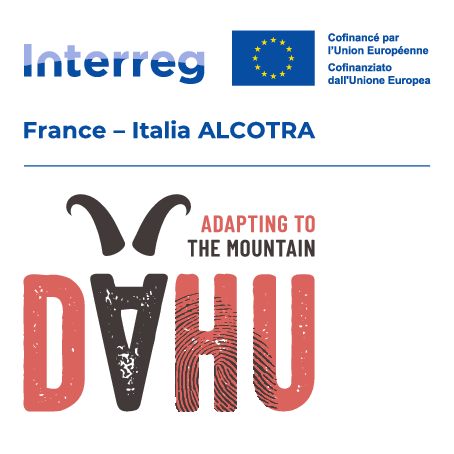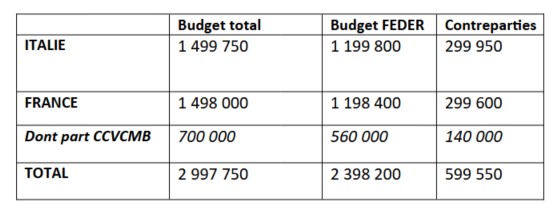The Alpine Museum is participating in the European Alcotra DAHU project, as part of its renovation to become the Mont Blanc Museum

The Alpine Museum is participating in the European Alcotra DAHU project, as part of its renovation
Presentation
Global warming is now well established in the public debate, at the heart of all concerns (political, social, economic, etc.). It is even more noticeable in the mountain areas of the Northern Alps. Now incontestable, it is regularly fueled by scientific discourses capturing its evolution over recent decades.
However, this warming, rapid and of anthropogenic origin, is part of a line of climatic alternations over the millennia. The mountain being one of the first environments impacted by climate change, the material remains of mountain societies particularly show the adaptations developed by humans in the face of these changes.
No research or cultural content has until now put these climate changes into perspective over the long term, documenting their impacts on the landscapes of the border territory between Haute-Savoie and the Aosta Valley in the high altitude sectors, and the occupation of these.
Sharing this observation, the Département de Haute-Savoie, the Communauté de Communes de la Vallée de Chamonix Mont-Blanc, the Région Autonome Vallée d’Aoste, the Association Fort de Bard and the Commune d'Issime came together within of the DAHU project. They offer an innovative interdisciplinary approach aimed at repositioning the notion of “climate change” in its historical context and offering cultural products as well as mediations on this major theme.
Activities
The DAHU project provides for the creation of a cross-border Scientific Committee combining perspectives in archaeology, heritage, history and art history. This committee will approach the theme of climate change from this systemic angle of the cultural landscapes of the past, present and future with a view to producing cultural content highlighting the capacity for adaptation that Man has been able to demonstrate over the centuries on this common territory.
This work will result in different typologies of sustainable achievements intended for the public, including a joint cross-border traveling exhibition which will circulate between the key cultural structures of the territory concerned (Fort de Bard, Alpine Museum). This system will be supplemented, among other things, by the design of an educational package for young people to already involve future local generations on the major theme of climate change. At the same time, the partnership will undertake a dense cycle of activities to raise awareness among populations and offer time for reflection in order to think about the sustainable development of the common territory of the high-altitude valleys of Haute-Savoie and the Aosta Valley.
Sites will be restored (Alpine Museum and Issime center) to strengthen the visibility and reception of cultural productions. They will anchor the subject in the territory in places which will provide keys to the interpretation of cultural landscapes.
Partners
- Région Autonome Vallée d’Aoste
- Département de Haute-Savoie
- Communauté de communes de la Vallée de Chamonix-Mont-Blanc (CCVCMB)
- Commune d’Issime
- Association Fort de Bard
Project period : 2023-2026

Files to download